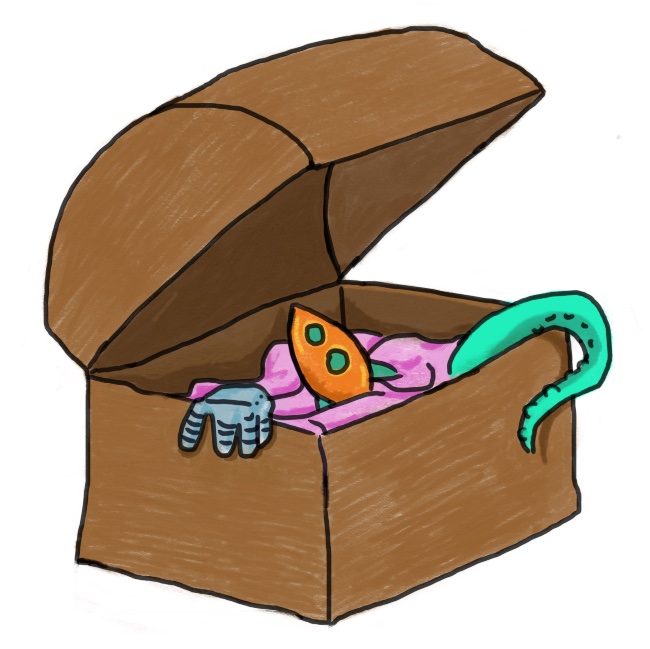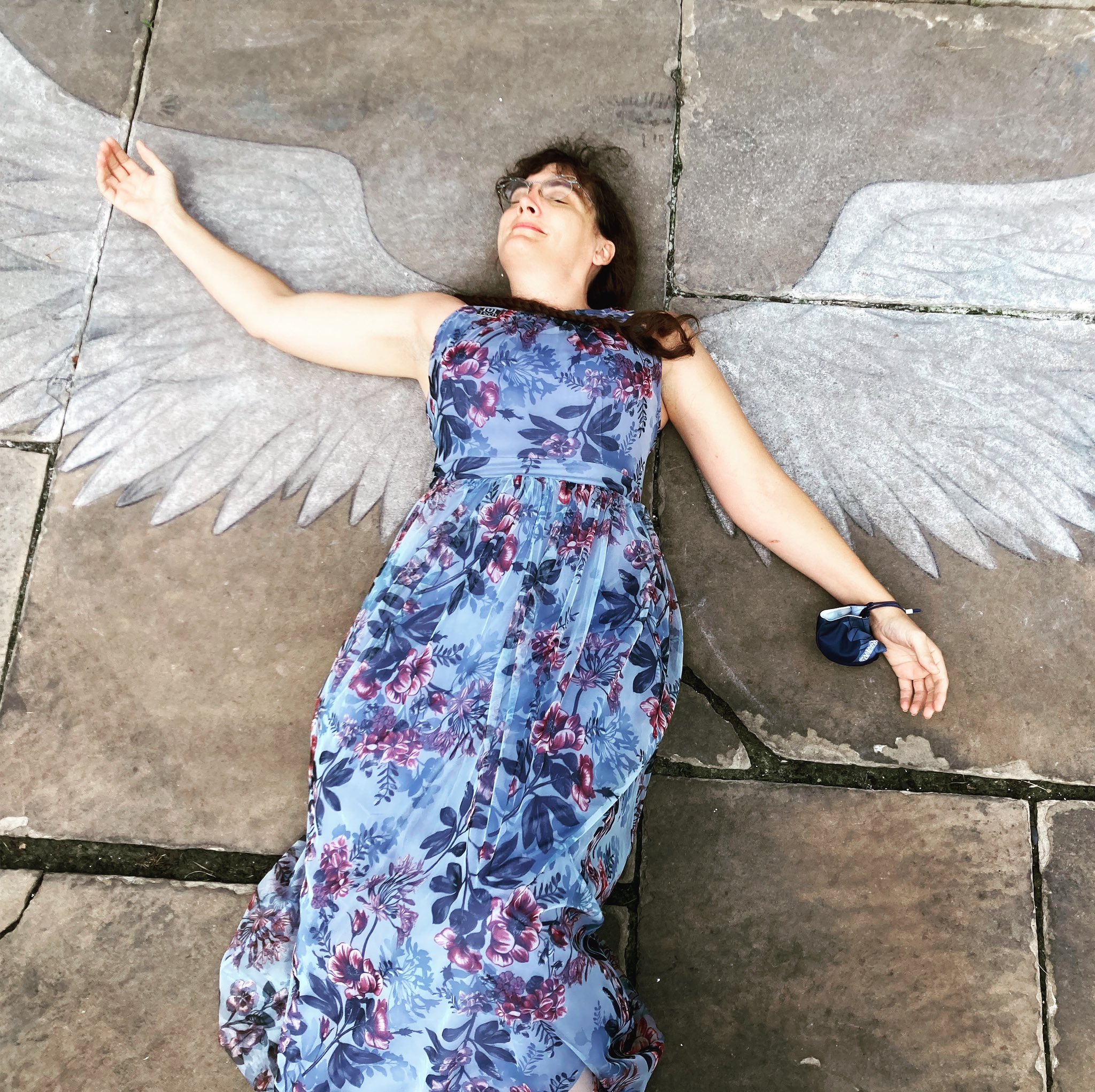My dear friend and a fantastic author and mathematician, Ursula Whitcher, is launching her first short story collection, North Continent Ribbon as part of Neon Hemlock’s 2024 novella series. Ursula is quiet and casual and unassuming, just as she was when I met her at an SCA meeting when she was still in college. She’s also fantastically brilliant, an expert on things like string theory and medieval universities and brioche knitting. I’m so excited for this collection, so I sat down with Ursula to talk about it in this, my first ever Interview Blog!
First off, this isn’t your typical collection. You didn’t just gather your favorite published stories but put together stories that all share the same universe, kind of like a novel in segments with different points of view, like Karen Joy Fowler’s Jane Austen Book Club or Ray Bradbury’s Illustrated Man. What can you tell me about what binds this collection together?
There’s an arc to it. It has an plot that arcs at the societal level, about… metaphorically, it’s about the society getting really mad about self-driving cars. At some point I read “Stet,” a Sarah Gailey story that has a really interesting setup.. The story is set up as the annotations going back and forth between a writer who has been asked to write an encyclopedia entry on self-driving cars and her editor, so most of the story takes places in the comments between her and her editor. Over the course of the comments, you discover that the writer is very angry because a self-driving car killed her daughter. It’s an intriguing literary device and really compelling and effective. I found myself thinking about it a lot. There was something bigger that bothered me about the story; this isn’t actually a story about why self-driving cars are bad, it’s about why cars are bad. If a car kills your daughter, you don’t care if it was a human driving it or not.
That spun me off into thinking about this question of how we really want someone to take responsibility when terrible things happen. The society I’m writing about has decided that big, moving vehicles are dangerous, and they are questioning whether AI should control things that are dangerous. They have AI controlling trains, boats, and rockets. They decide that they have to have a human making the difficult, the truly awful trolley-problem decisions.
Break glass in case of moral decision making? And then that person is responsible?
They go one step further and decide that the people who should be stuck making the horrible decisions are convicted criminals.
Ouch. Hey, literal captive, come do high-stress decisions and emotional labor with consequences?
Right, and whenever you have prison labor, you have incentives to convict more people. The background arc of the collection is how the society gets to the point where it thinks this is a good idea, and then how the society pushes back to undo the system.
How are people held “responsible” for their trolley decisions? Are they adequately compensated for this—I am guessing, not so much?
Maybe I’ll let one of my characters explain it! Here’s Ise, the furious teen protagonist of “The Last Tutor”, describing the situation to their little brother:
“Mirek, has anyone ever told you why your [toy] trains have a face?”
“Because they’re adorable like I am?”
“Because there are people bound inside them, with wires threaded through their brains. Trains have to choose, sometimes, which track to follow. If they make the wrong choice, somebody might die. But it’s not fair to leave a life-or-death decision to something without a soul. So we take souls. We trap people inside the engines, and we drug them, and we never, ever let them out.”
Of course, the idea that prisoners sleep in peaceful unconsciousness until a life-and-death situation arises is total propaganda. The final story in the collection describes what it’s like to be trapped inside one of these machines.
Yiiiikes.
How many stories are there, in the collection, to tell this over-arching plot, and were any of them previously published?
There are six stories total, most of them were previously published. A couple of novelettes in Asimov’s, a couple in online magazines. The final story was written just for the collection.
How many stories versus novelettes?
Three short stories, three novelettes. Altogether it ends up being the length of a long novella or a short novel.
Did you have the plot arc in mind as you wrote the stories?
I had the societal issue, the huge moral problem in the background. I wrote a few stories fitting in at different times and places. I’d have to go back and check notes to sort out what order I actually wrote these in, because then you want to sell the stories and they don’t get published in the same order you wrote them. I wrote these separate narratives reacting to different parts of this moral problem, and when I reached the point where I’d written enough stories in the same universe that it could be a collection, I started filling in the gaps with new material. I wrote a series of novelettes, the first being the one where you see people getting frustrated with AI technology and wanting to change society to have more control over it. Then I wrote two novelettes where people are working with the resistance in various ways trying to push back.
It sounds to me more like what golden age writers called a “fix-up” novel than a collection.
I discovered that the title for this sort of thing is a “story cycle.” Where you have a bunch of individual stories that are reacting to each other. They are six individual protagonists with individual goals.
Still, it sounds like one story with multiple protagonists and side-arcs.
I’ve had a silly problem in trying to describe it, in that ribbons are a big unifying image. These stories are connected, they are interwoven, they are braided together. With the ribbons right there as an obvious metaphor, every time I say something about entwining, it’s starting to seem a bit much.
No, I love it! Is your fabulous sex workers unionizing story “Association of 12,000 Flowers” in the collection? I remember the importance of the ribbons in the hair to communicate loyalties and histories.
Yes, it’s in there. The third or fourth story? Must be the fourth.
What I loved about that story was how it had this rich anthropological feel to it, a lived-in universe reminiscent of lost colony fictions, or really rich epic fantasy. Would you classify this as science fiction with fantasy overtones?
I think of it as very grounded space opera. It is science fiction in the sense that there are different technologies running around and most of the technology that is used is plus-or-minus explicable if you’re willing to allow my completely impossible space drive. Far future enough that you don’t really know how we got here from there, but you can feel like we did.
Sounds Star Wars-y.
That was long, long ago in a galaxy far, far away. This is long, long in the future and not so far away.
Which flavor of Star Wars fan would like this the best?
I think Andor.
I think she’s right. I was going to say Andor, but I wanted her to say it. Please check out Ursula’s work. Her writing is so rich and intelligent. I want to grow up to be like her. Or, okay, she’s younger… I want to grow down to be like her.
When will the book be available for your hot little hands? That all depends on the kickstarter. Pre-order through there and help it be a reality!


